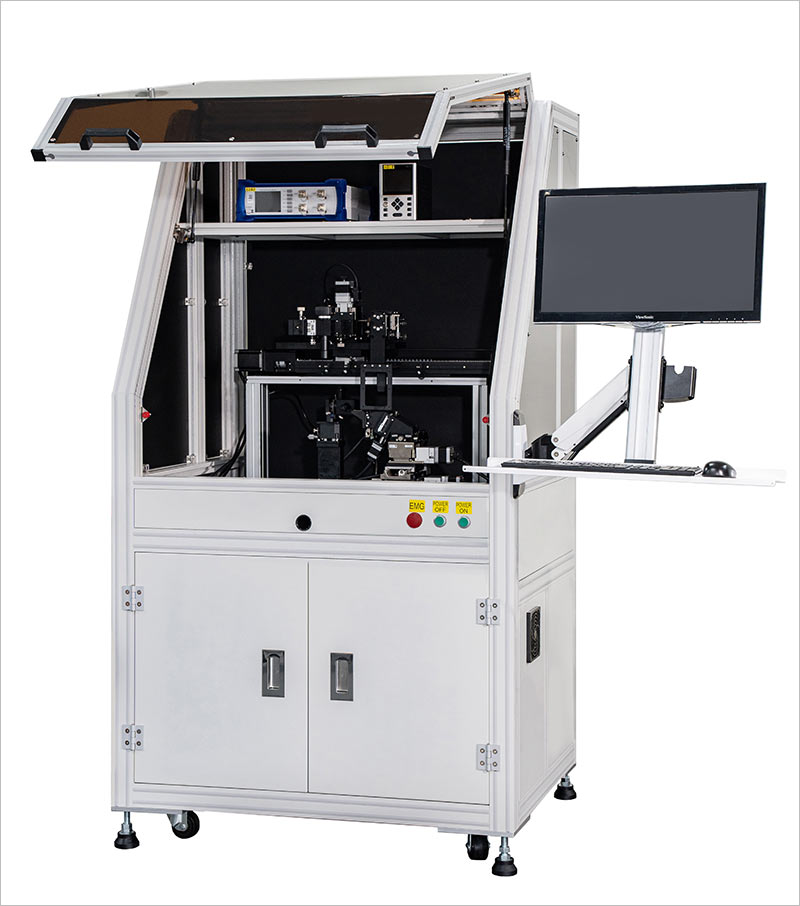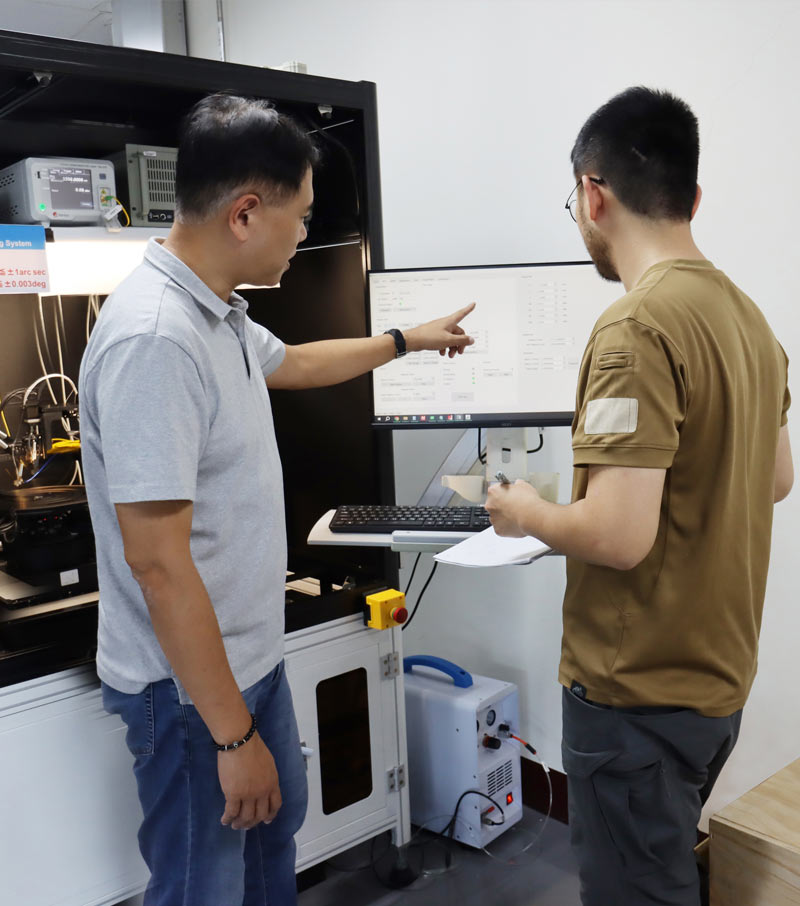


Continuing the digital transformation and artificial intelligence (AI) technology boom of recent years, which is primarily based on semiconductors, intelligent automation systems, modules, and key components, and also creating sturdy and durable "shovels" for this AI gold rush led by NVIDIA, GMT has launched silicon photonics coupling equipment with integrated machine drive control to help build the semiconductor silicon photonics packaging and testing industry chain.
Mr. Huang Chun-ming (黃俊明), Vice President of GMT, stated that the company initially started with the manufacturing of precision mold bases and mold parts. After many Taiwanese mold factories relocated to mainland China in the 1990s, the company began to transform into the production of various automated transmission components, module platforms, and systems, marketing them globally under the "GMT" brand. Following the launch of Apple's smartphones in 2006, GMT entered the 3C (computer, communication, consumer electronics) OEM supply chain, providing end customers with multi-lens alignment modules for mobile phones, touch panel lamination modules, and battery testing equipment, including major Chinese mobile phone manufacturers, further expanding into AI and semiconductor industries.
With the onset of the US-China trade war in 2019 and the end of the pandemic, which accelerated the restructuring of global supply chains, GMT, after achieving a certain level of precision in its mechanical products, combined motion control technology to launch integrated machine drive control solutions. In 2023, the company began to introduce silicon photonics coupling and advanced packaging applications, conducting equipment development, demonstrating the potential to break through Moore's Law, and also promoting the development of its own component and module mechanical design core technology towards higher levels of complexity and precision, with a longer product lifespan and undiminished accuracy compared to Japanese competitor brands.
The company's 6-axis fiber optic high-precision coupling alignment platform module, which won the 2019 Taiwan Excellence Award, adopts a 6-axis synchronous control design, so it can be used for fiber optic coupling alignment, quickly and accurately reaching the positioning to precisely connect the two ends of the optical fiber, achieving a core diameter miniaturization (9µm) design, and improving production efficiency. At the same time, combined with its self-developed motion control algorithm, it helps customers easily introduce production systems, solving customer problems from the manufacturing process, so that future product demand performance can maintain its competitiveness. It has now been adopted by mainland Chinese fiber optic and optical coupling equipment manufacturers.
In addition, with the development of generative AI in recent years, the amount of data required by driving chips, cloud computing, and their data centers has increased rapidly, and energy consumption and heat have also increased significantly. This has led to the emergence of optical communication and silicon photonics CPO co-packaging technology to meet the computing needs of data centers and cloud computing servers. Major semiconductor manufacturers in various countries are striving to build a complete AI industry chain.
Huang further pointed out that in order for the fiber optic high-precision coupling alignment equipment to accurately connect optical fibers, conduct signals, and achieve maximum light throughput, it must be equipped with a controller and application software, as well as a motion control algorithm that can search for the maximum light source. Based on the above requirements, the company has invested a large amount of R&D resources since 2019 to carry out the drive control development of the motion control system, combined with the foundation of many years of mechanical design, to timely launch integrated equipment that meets market needs. Recently, the company has been actively negotiating cooperation projects with international AI server users and major Taiwanese fiber optic passive component and module manufacturers, with shipments estimated to begin in early 2025, and in the future, it can be exported overseas along with the overseas layout of Taiwanese system manufacturers.
When industries on both sides of the Taiwan Strait face the potential second restructuring of the "China+1" supply chain, or allow production capacity to spill over into Southeast Asia, Taiwan, Japan, and South Korea are the main sources of semiconductor technology. GMT, because it has vertical integration capabilities from R&D to manufacturing, with a product self-sufficiency rate of up to 95%, is sufficient to provide the required full range of high, medium, and low-end products. It is currently actively building a TAF-standard motion control testing laboratory, dedicated to providing customers with more accurate and stable high-quality products.
At the same time, it can also solve some customized problems through modular design, implement customer original design concepts, and improve the investment benefits of post-installation reprogramming. To date, in addition to achieving customized stacking platforms and mechanical control motion for 6-axis fiber optic coupling alignment, it can also use integrated machine drive control solutions to lower the entry barrier for customers, making electromechanical integration more convenient and tightly configured; and adding search algorithms, visual recognition, and other functions can provide coupling alignment equipment that meets customer use requirements with easy-to-operate tuning software at the customer end to meet the action requirements of any workstation.
